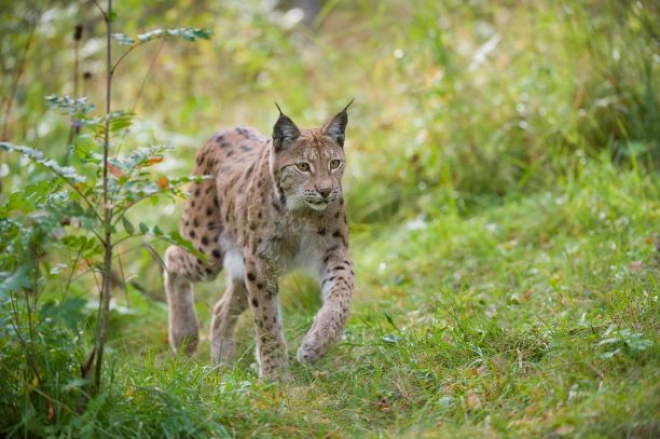Lynx reintroduction discussed in Scottish Parliament for first time

The case for reintroducing lynx to Scotland is being discussed in the Scottish Parliament for the first time, with a reception today (Tuesday 25 April) organised by rewilding charities and sponsored by Ariane Burgess MSP.
The Lynx to Scotland parliamentary event held at Holyrood reflects growing public support for the return of the Eurasian lynx – a native species missing from Scotland since being made extinct through hunting and habitat loss more than 500 years ago.
MSPs, senior advisors and rural groups are to attend the event, hosted by Lynx to Scotland project partners SCOTLAND: The Big Picture, Trees for Life and The Lifescape Project.
“It’s good news that politicians and policy makers are now seriously discussing the return of lynx, which would have strong public support. Scotland is one of the poorest places on Earth for nature, and if we are serious about tackling the nature and climate emergencies, these conversations really matter,” said Peter Cairns, Executive Director of SCOTLAND: The Big Picture.
The potential for reintroducing lynx was also debated in the Scottish Parliament on 20 April, after a parliamentary motion by the SNP’s Kenneth Gibson MSP received cross-party support.
The motion noted calls on the Scottish Government to rectify lynx extinction in Scotland by a managed reintroduction, following appropriate assessments. It highlighted the moral and ecological case for the species’ return, and how lynx reintroduction could make Scotland’s natural world richer and stronger.
Research suggests the Highlands has sufficient habitat to support around 400 wild lynx. Reintroducing the species could help reduce the impacts of deer browsing on woodland, boost biodiversity and restore natural processes, while also providing fresh economic opportunities for local communities, says the Lynx to Scotland project.
The rewilding charities emphasise that any lynx reintroduction should properly consider all relevant stakeholder interests and legitimate concerns, including through full consultations.
Scotland has more woodland deer than any other European country. By preying on roe deer – their preferred prey – lynx could reduce browsing pressure on regenerating woodlands, helping to expand and enrich the country’s forests. Lynx could also act as high-profile ambassadors for nature recovery, attracting valuable tourism revenue for rural communities.
Lynx are shy and elusive woodland hunters, which pose no danger to people, leading lynx expert Dr David Hetherington will tell attendees at the Holyrood event. He will highlight how lynx have successfully returned to European countries such as Germany, France and Switzerland.
Predators play a vital ecological role in maintaining healthy living systems. Lynx are known as a keystone species because they can have a profound influence on the behaviour, abundance and distribution of so many other species, with biodiversity negatively affected by their absence.
“Scotland could become the world’s first rewilding nation, but is still one of Europe’s only countries lacking large predators. The support or acceptance of the land management community for a well-considered, carefully managed lynx reintroduction would help deliver on commitments to restore 30% of nature by 2030,” said Steve Micklewright, Chief Executive of Trees for Life.
Adam Eagle, Chief Executive Officer of The Lifescape Project, said: “Scotland has suitable habitat for lynx to prosper here. The return of this magnificent creature is about choices, and our willingness to live alongside other species.”
Last year, the Lynx to Scotland project completed the first detailed research into the social feasibility of lynx reintroduction, consulting farmers, gamekeepers, foresters, conservationists, landowners, tourism operators and rural communities in the Cairngorms National Park and Argyll.
The one-year study found sufficient appetite from a diverse range of rural stakeholders to examine whether potential barriers to lynx reintroduction can be overcome. Conversations have since begun between cross-sector groups, to build cooperation and openly explore the pros and cons of any future reintroduction.
For more details, visit www.scotlandbigpicture.com/lynx-to-scotland.


